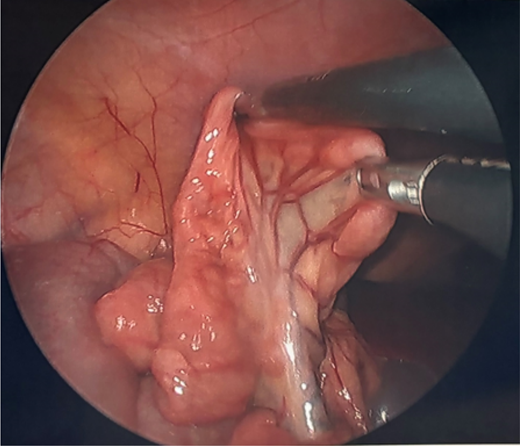Familial Mediterranean fever is one of the most common hereditary autoinflammatory diseases with episodic serositis resulting in secondary amyloidosis, small bowel obstruction, and infertility if untreated.
A 3-year-old boy of Syrian and Egyptian descent, with 3 healthy older siblings, presented at 28 months old, with abdominal pain. His examination was unremarkable, X-ray of the chest/abdomen normal, and an ultrasound negative for intussusception. He improved on non-steroidal analgesics and constipation was thought probable. At 29 months old, he awoke screaming with umbilical pain. He was afebrile with an abdominal X-ray revealing a loaded colon and improved on non-steroidal analgesics. At 30 months old, he presented febrile at 38 degrees Celsius, with a painful right knee following minor trauma during play. A joint effusion was seen on X-ray, and 3cc of serosanguinous cloudy fluid was drained revealing 22,000 white blood cells (WBCs)/μL, few WBCs on gram stain and a negative culture. Laboratory investigations revealed a WBC count of 12,500 cells/μL, sedimentation rate of 28 mm/hour, and C-reactive protein of 32 mg/L, with an MRI suggesting septic arthritis. He improved on doxycycline for 28 days; however, Lyme serology which resulted after discharge was negative. At 31 months old, he presented with 4 days of fever, diarrhea, vomiting, and abdominal pain. A CT scan suggested an inverted Meckel’s diverticulum and laparoscopy revealed serous-free fluid, mild thickening of the small bowel with no Meckel’s and mildly prominent lymph nodes. An appendectomy was completed. His investigations revealed elevated WBCs of 15,200 cells/μL, sedimentation rate 60 mm/hour, and C-reactive protein 128 mg/L, with stool PCR revealing rotavirus and astrovirus.
In view of recurrent and worsening symptoms, he was investigated for chronic/recurrent infection and other inflammatory syndromes. A primary immunodeficiency panel revealed two heterozygous pathogenic variants of the MEFV gene, c.2040G>A and c.2040G>C, associated with familial Mediterranean fever. Five other variants of undetermined significance (ATM, DSG1, FANCB, TNFRSF4, and TP63) were also detected. With a working diagnosis of familial Mediterranean fever, treatment with colchicine was initiated, and further testing of his parents and other siblings is being undertaken to complete genetic evaluation.
Image depicting a moderate amount of serous fluid lateral to the right colon and above the liver as well as a ligated appendix base and stump.
Image depicting a moderate amount of serous fluid lateral to the right colon and above the liver as well as a ligated appendix base and stump.
Image depicting the small bowel and its mesentery with mildly prominent lymph nodes.
Image depicting the small bowel and its mesentery with mildly prominent lymph nodes.






